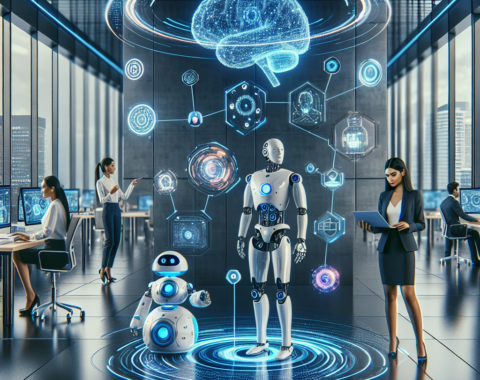
Navigating AI’s Impact on Penetration Testing and Cybersecurity Strategies
In the ever-evolving world of cybersecurity, the integration of artificial intelligence (AI) marks a significant turning point. As organizations increasingly rely on AI to bolster their defenses, cybersecurity professionals, particularly penetration testers, find themselves at a crucial crossroads. While AI presents opportunities for enhanced security measures, it also introduces new complexities that demand innovative approaches. This blog post delves into how AI is transforming penetration testing and reshaping cybersecurity strategies.
The Role of AI in Cybersecurity
The intersection of AI and cybersecurity offers promising enhancements to traditional security frameworks. AI technologies can learn and adapt, making them powerful tools in identifying threats and anomalies. Key capabilities include:
- Threat Intelligence: AI can process vast amounts of data in real time, identifying and responding to threats more swiftly than human analysts.
- Anomaly Detection: By learning baseline network behavior, AI can detect deviations that could indicate a potential cyber attack.
- Automated Response: AI systems can autonomously mitigate certain threats, reducing response time and minimizing damage.
Challenges in Integrating AI with Penetration Testing
Despite the benefits, the introduction of AI presents several challenges for penetration testers:
- Complexity: AI systems can obfuscate the inner workings of networks, making it harder for penetration testers to understand vulnerabilities.
- Adversarial Attacks: AI models themselves can be targeted and manipulated, introducing a new vector for attackers.
- Continuous Learning: AI’s dynamic nature requires constant updates and learning, which can complicate the testing process.
Strategies for Penetration Testers in the Age of AI
To navigate these challenges, penetration testers must adapt their methodologies and strategies. Here are several approaches:
- Understand AI Systems: Testers need to become familiar with AI technologies and their implementation within network environments.
- Simulate Adversarial Attacks: By conducting adversarial testing on AI models, testers can uncover vulnerabilities and improve model resilience.
- Leverage AI Tools: Penetration testers can also use AI-based tools to enhance their own testing processes, enabling more efficient vulnerability assessments.
The Rising Importance of Collaboration
Effective penetration testing in an AI-integrated environment requires collaboration across different sectors of an organization. This entails:
- Engaging AI Developers: Pen testers should work closely with AI developers to understand system intricacies and potential weaknesses.
- Cross-disciplinary Teams: Building teams that combine the expertise of cybersecurity, AI, and data science can lead to more robust security solutions.
- Continuous Education: Organizations should foster a culture of ongoing learning to keep up with the fast-paced advancements in AI and cybersecurity.
Future Directions and Innovations
Looking ahead, the role of AI in cybersecurity is set to expand. Industries should anticipate several future trends:
- Increased AI Adoption: As confidence in AI’s capabilities grows, more organizations will adopt AI-driven security measures.
- Complementary AI Technologies: Innovations such as machine learning and natural language processing will further enhance AI’s potential in cybersecurity.
- Ethical Considerations: As AI becomes more prevalent, ethical considerations around privacy and data security will become increasingly important.
Furthermore, the concept of AI explainability—making AI decision-making processes transparent—will become a critical focus, ensuring trust and accountability in AI systems.
Conclusion: Embracing AI’s Dual Role
As AI continues to shape the landscape of cybersecurity, penetration testers must embrace its dual role as both a tool and a challenge. By adapting strategies, fostering collaboration, and anticipating future trends, cyber professionals can effectively navigate the intersection of AI and cybersecurity. The journey ahead requires vigilance, innovation, and flexibility. Ultimately, those who are proactive in integrating AI into their cybersecurity frameworks will be best positioned to defend against the evolving threats of the digital age.
In conclusion, while AI brings transformative potential, its integration into cybersecurity demands an equally transformative approach, ensuring safety and security in an increasingly digital world.




